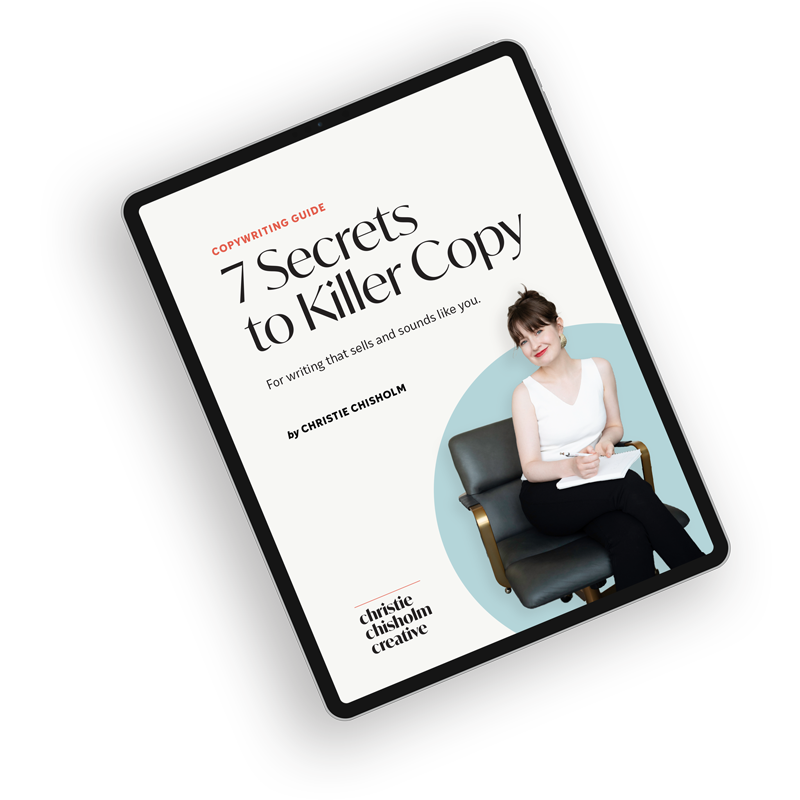It’s a strange facet of human nature that sometimes the things we love most are also the hardest to get ourselves to do.
Especially when it comes to creators—artists, writers, musicians, inventors of any kind.
Sometimes we call it “writer’s block.”
We let the half-written novel gather digital cobwebs, if we ever even get around to starting it in the first place.
The tins of watercolors and charcoal gather literal dust (and pet hair, and sometimes the odd expired gnat) while we let them sit on a desk that we also ignore.
The upright piano waits, untuned, for soft hands to stretch and come help it sing. The guitar stays locked in its case, the drum kit disassembled.
We walk by these things, either physically or mentally, every day, see them out of the corner of our eyes, let them make use feel guiltier, smaller, sadder, as they stir that most useless and aggravating of emotions: regret.
There’s another, less grandiose and more easily fixed agent at play.
Cultural wisdom tells us we put off things that stir passion in us because we’re scared we’ll fail at them. If we suck at doing what we love most, what does that say about us? What does it mean for our sense of self? How do our egos ever recover?
I think there’s truth in that, sure, but I think there’s another, less grandiose and more easily fixed agent at play.
Doing the things we love often requires brainpower, and that can be a tricky thing to summon when you feel like all of yours has already been monopolized by the day, the news, your job, your kids.
When we sit down to write, or to create anything, we’re sitting down to think, and sometimes thinking is exactly what we don’t want to be doing.
This horrific year is a great example. Back in March, so many of us claimed 2020 as the year we would write our books, pitch to all the publications, finally creating a daily writing habit that stuck.
After all, we had the time (or, so those of us who don’t have to homeschool kids thought). It was a way to create a silver lining out of this oh-so-hideous year, this year that we all want to crumple up and stomp on and throw in a trash can and light on fire.
I mean, fuck this year, right?
One of my favorite things about human nature is that we’re programmed to adapt. We’re problem-solvers. And I think there’s a part of us that’s always looking for a way to turn something bad into something good. It’s not necessarily a noble impulse—you could even call it avoidant, selfish, maybe—but I think it’s a positive one.
When 2020 quickly started to smoke and then burn and then blaze in a maelstrom of confusion and sadness and shit, a lot of us decided were going to find a positive spin on it. And for many of us, that meant finishing the projects we’ve dreamed about but hardly touched, if ever.
And then those projects sat there. The pages stay empty, the publications un-pitched, the books awesomely unwritten.
What the hell is wrong with us, anyway?
The answer is nothing, of course. The answer is that this is an absolute dumpster fire of a year, and one that often makes us want to turn off our brains a little … or a lot.
I’ve watched more Netflix over the past seven months than … I don’t even have a comparison. It’s been so much. Just hours a day.
Do I feel good about it? Absolutely not. But does it help keep my anxiety at bay?
Of course it does.
Is it a hell of a lot easier for me to tune out the world by flipping on the TV than tune further into it by sitting down to write?
Of course it is.
Writing requires brainpower, and some days, that feels like the absolute last thing I have to spare.
But then over this past month, I discovered a magical combination of writing tricks—ones I previously knew about but never put together—and it’s changed everything.
Well, it’s changed my daily writing life. And sometimes that feels like everything.
I’ll take you through each trick so you can try them for yourself.
Writer’s Block Magic Trick #1: Turn off your brain
Writer’s Block Magic Trick #2: Set a trigger
Writer’s Block Magic Trick #3: 750words
Writer’s Block Magic Trick #1: Turn off your brain
You can’t always control how much brainpower you have on a given day, just as you can’t control world events. But there is a way for writing to require less brainpower, a way for ideas to flow out of you without really having to think about it. A way to get past the hurdle of the blank or half-written page and actually put letters to paper (digital or otherwise). A way to—dare I say it—cure writer’s block.
It’s how I wrote this, and how I’ve been getting myself to write every single day this month (an unprecendented feat).
You’ve probably already heard about this technique—but before you shake your head and think “I’ve already tried that,” bear with me. I’ll get to the new part that’s made all the difference for me.
The technique is often referred to as “morning pages.”
It’s a term that was popularized (perhaps even originally penned?) by Julia Cameron in a book called The Artist’s Way, which is a bit of a tome for creative types.
You don’t have to do it in the morning, although I think there’s an advantage to tapping into your brain when you’ve just woken up and the boundaries between sleep and waking … subconscious and conscious … fantasy and reality … are still blurred.
I simply call it stream-of-consciousness writing, because that’s exactly what it is, and you can do it any time.
There is a way for writing to require less brainpower, a way for ideas to flow out of you without really having to think about it.
The entire point is to let your brain go and just type, or scribble. You usually set some sort of timer or pre-determined word count—15 minutes is standard—and in that time, the goal is simply to keep writing, without pause. If you don’t have anything to write about, that’s what you write: “I don’t have anything to write about and I feel silly typing this because what am I even going to write about anyway?”
The great thing about stream-of-consciousness writing is that not thinking is a key element of the practice. You aren’t supposed to think. You certainly aren’t supposed to edit. It’s a way to open up your brain—unclog it for the day, if you will.
Sometimes nothing particularly interesting comes from mine, but when I’m done I at least have the satisfaction of knowing I did it, that I wrote something that day.
And sometimes, it leads to strange strokes of genius. It opens up my conscious mind to all sorts of connections and associations that may have been boiling and rumbling around in the back of my brain.
It’s great therapy, honestly.
RELATED: Steinbeck’s pencils
I use this technique for any form of writer’s block. When I don’t know what to write about, I use it. When I’m stuck on a certain part of a story, or I want to experiment with a whole bunch of ways of telling something but I don’t really know where to begin, or I need to brainstorm headlines, I use it.
Sometimes I use it when the goal isn’t even writing—when I’m trying to parse through something that happened in my life—a choice I have to make or a fight I got into with a friend or my sadness over the fact that simply hugging people now feels like treacherous ground.
It helps.
Want to know the key to being a better writer?
Writing. A lot.
Like any muscle, you want to keep it active or it atrophies, and then you have to do all of the work of building it back up again.
Here’s the problem: While it’s an excellent technique for breaking through writer’s block, or any sort of mental block, it can still be tough to get yourself to sit down and do it, which brings us all the way back to square one.
So here’s where the real magic comes in.
Writer’s Block Magic Trick #2: Set a trigger
I learned this trick recently from another copywriter I adore named Laura Belgray. Even though I’d heard about it before, something about the way Laura explained it made it stick.
The trick is easy: Use a trigger.
It’s about setting up a cause-and-effect chain in your own life. Here’s how it works:
1) Think about something you do every day, almost on instinct. It could be brushing your teeth or stretching in the morning or looking at your phone after you wake up.
2) Decide to associate that moment with an action. When you do it, then you do something else, like write “morning pages.”
That’s it!
Before I tried this trick, I had an already-existing ritual. Every morning, I wake up, pet my dog, stumble to the bathroom, then stumble to the kitchen, where I make myself a cup of coffee. (I’m super into Nespresso these days, even though my master’s thesis was on coffee and I know about a dozen different and much snobbier ways to make it, but that’s a story for a different day. Anyway, don’t judge.)
Just make yourself do something that relates to a greater goal that doesn’t require much thought. Set a trigger, do the mindless thing.
I take that cup of coffee, go back to my room and sit cross-legged on my bed. And then I take a sip of coffee. That’s my trigger: Sitting cross-legged on my bed, taking my first sip of coffee. When I do that, I know it’s time to crack open my laptop and start typing. And it works!
Coincidentally, I started doing this on October 1 (not as a “new beginnings” thing, just because I happened to read about it on September 30). And I have done it every single day of October. Easily. I look forward to it now.
Sure, it’s not that long of a streak. I’ve been doing it for 23 days, not 23 weeks, but I’ll take any victory I can get. And I suggest you do, too. (Update: that streak is now 54 days and going strong.)
Writer’s Block Magic Trick #3: 750words
Before you run off and start scribbling or clacking away, I’ve got one more trick for you. Well, really, it’s a tool. It’s a site called 750words.com.
The premise of the site is simple, and pretty much baked into its name: It sets a goal for you to write 750 words a day. I’m not sure about the science behind that number, but if you’re going at a constant rate of typing (as you would with “morning pages” or stream-of-consciousness writing), it takes about 15 minutes to hit.
It uses unobtrusive elements of gamification to spur you along. Every day you complete your word count, you get an “X” on the box for that day, for example, and you get fun little badges when you reach certain goals or behaviors.
When you sign up you get an “Egg” badge, after writing for 3 days in a row you get a “Turkey,” 10 days in a row gets you a “Flamingo,” and so on, leading all the way up to a “Great Griffin” badge, which represents more than 2,000 consecutive days of hitting your word count.) You can also opt in for monthly challenges.
You can use the site for free for the first 30 days, and then after that it’s a subscription of $5/month (for the record, I’m in no way affiliated with the site, I just like it and it works great for me). It’s worth trying out.
I signed up for the site a while ago and loved it, but I rarely used it. I wasn’t really doing it right; I would try to use those 750 words to write something I would use elsewhere, and it just became another writing task I put off.
RELATED: Dear Norman
It’s really that magical combination of using it specifically for stream-of-consciousness writing, plus adding a trigger to spur me into signing on, that’s done the trick.
While all of these tips are clearly aimed at writers, and at breaking that thing we call writer’s block, I think the same principles can be applied to almost any craft.
Can’t get yourself to paint? Create a trigger for yourself that prompts you to sit down and doodle for 15 minutes—no edits allowed.
Keep staring at that guitar case with wistful regret? Set up a trigger that compels you to at least pick it up, unzip your guitar, and pluck at the strings for 15 minutes—even if it sounds terrible.
Just make yourself do something that relates to a greater goal that doesn’t require much thought. Set a trigger, do the mindless thing. You’ll be amazed at what comes.
I’d love to know if these tricks work for you, or if you have any other magic tricks to making writing suddenly appear. Let me know in the comments below!






I feel how using these 3 tricks will help focus me. I have taken creative avoidance to a fine art, which means I am not actually ever getting to the tasks that make my soul sing. So, thank you for these tools.
Hi, Cheryl! That’s an oh-so-familiar skill—I feel like I could write a thesis on the art of procrastination and avoidance. The combination of these tricks is seriously the only thing that’s worked for me. I hope they help you, too, and I’d love to hear how it goes!
As always, I love your texts. Thank you!
Thanks, Eva! I’m so glad you enjoyed it, and if you try any of these tricks, I hope you find them as useful as I did!